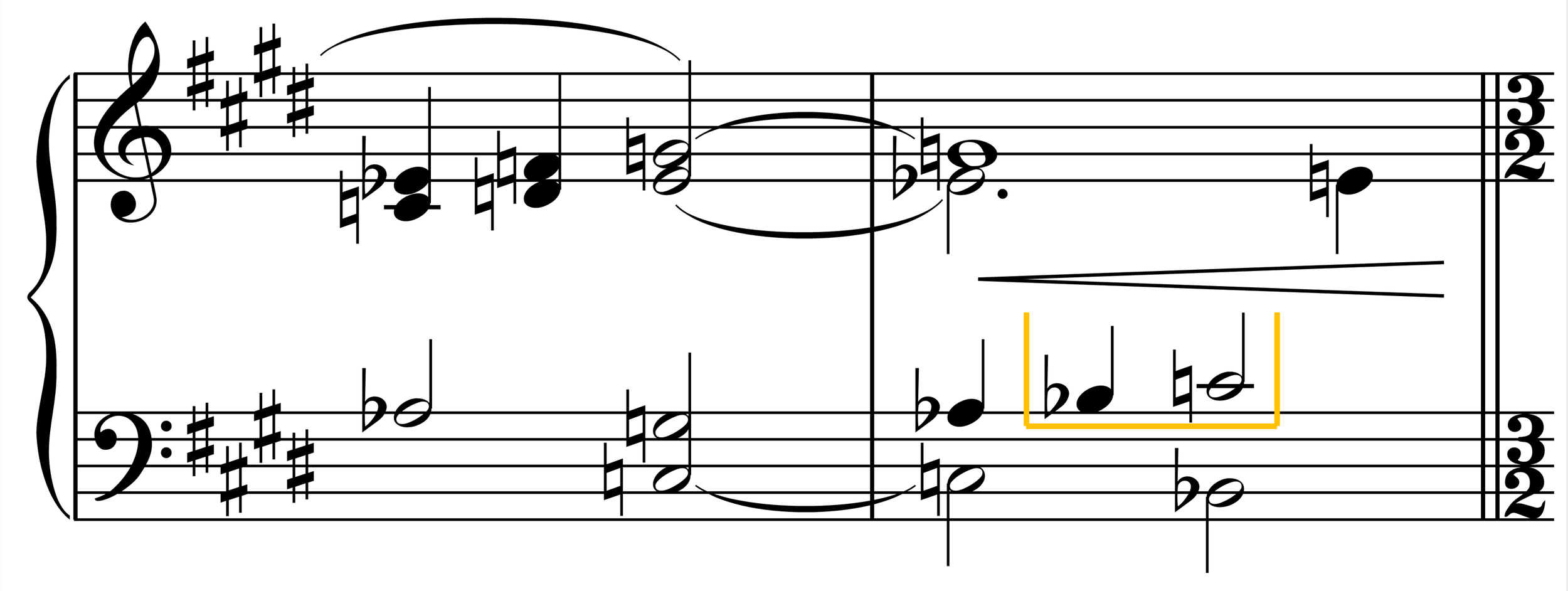“The right-hand thumb is already position on the E-flat. This fingering reduces position shifts and allows for smaller hands to play all the notes of the final chord simultaneously.”
Submitted by Michael Clark
Published on 5/24/2023

“The right-hand thumb is already position on the E-flat. This fingering reduces position shifts and allows for smaller hands to play all the notes of the final chord simultaneously.”
Submitted by Michael Clark
Published on 5/24/2023

“The top notes of some of the large chords in the left hand are within reach of the right-hand thumb, eliminating the needs for rolls on those chords.”
Submitted by Michael Clark
Published on 3/16/2020

Submitted by Perry Zou
Published on 5/21/2025
“Redistributing the large chords in the RH to the left to increase accuracy and minimize unnecessary drag in tempo. Can be applied similarly in m. 120-125.”

“Take the upper note of the tenths in the right hand.”
Submitted by Michael Lenahan
Published on 1/9/2021

“This fingering helps facilitate a clear counterpoint of the upward moving motif played before in the right hand without muddying the waters with the pedal.”
Submitted by Wade Troyer
Published on 12/14/2022

“Spacing the chord like this helps all the notes to sound at once and keeps that consistent texture without needing to roll or play the notes before or after the 3rd beat. Also, it allows the left hand to hold the low F# through the quick moving harmonies above it without muddying too much with the pedal.”
Submitted by Wade Troyer
Published on 9/1/2023

“This splitting of notes between hands allows the chords to not be rolled in the left hand and the pianissimo in the final measures is easier to achieve. Other moments like this occur throughout the piece but this is the one that makes the most sense to alter.”
Submitted by Wade Troyer
Published on 12/14/2022

“Some pianists might be able to reach the tenths on beats 1 and 2 of m. 10, but the B-sharp is out of reach for most.”
Submitted by Michael Clark
Published on 1/1/2020

Submitted by Josh Condon
Published on 6/15/2020

Submitted by Hannah Roberts
Published on 3/8/2023

Submitted by Melinda Smashey Jones
Published on 12/29/2020

Submitted by Melinda Smashey Jones
Published on 12/29/2020

“I play the left-hand F-sharp before the beat. The four treble notes sound better struck as a solid chord than rolled, and I am less bothered by the bass F-sharp being early.”
Submitted by Melinda Smashey Jones
Published on 12/29/2020


Submitted by Melinda Smashey Jones
Published on 12/29/2020

Submitted by Melinda Smashey Jones
Published on 12/29/2020

“Taking the C in the right-hand allows the first chord to be struck simultaneously.”
Submitted by Michael Clark
Published on 3/15/2020

“I can reach the B-flat on the downbeat of m. 44 with my right-hand thumb which eliminates the need to jump in the left hand and facilitates clearer pedaling. When the left hand has rests, it can play the melody notes, freeing the right hand for better control of the sixteenth notes.”
Submitted by Michael Clark
Published on 1/1/2020

“I think taking the B in right hand is preferable to striking the bass note early. This fingering, in which the notes can be struck simultaneously, facilitates a cleaner pedal change as well.”
Submitted by Michael Clark
Published on 4/4/2020